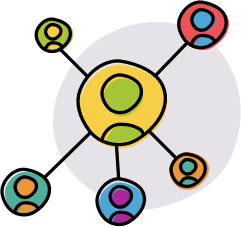Case study: State and local government
How a local government’s adoption of new technology yields agile way of working


The client’s perspective: The need for the adoption of new technology
To keep up with a substantial real estate boom, a local county government sought to replace an antiquated virtual mainframe property tax system with a streamlined, cloud-based platform that offers enhanced security, flexibility, and connectivity.
Property values were at an all-time high and data showed that new construction activity had picked up significantly. This county government handled the valuation, administration, and collection of property taxes for more than 750,000 residential and commercial parcels, amounting to nearly $6 billion in property taxes, or 45% of the county’s overall revenue. Meanwhile, their current property tax system was built in the 1970s—when the county was about half its current population size. The system couldn’t keep up with the growth, much less provide an enriched customer service experience.
The stages of technology adoption: Overcoming barriers to change
Impressed with Eagle Hill’s philosophy and disciplined approach to change at a transformational scale, the county leadership team engaged our experts to drive its adoption of the new technology and ensure successful implementation in a way that would realize the new systems’ desired benefits.
Understanding how critical it was to acknowledge, plan for, and address this change early on and in a holistic way, the client trusted our change management expertise to deliver a structured technology adoption strategy that addressed adoption barriers while providing a supportive environment for employees. Even though the benefits of a new system were clear, the change for the user was tremendous. Some people were excited about becoming more modern while others were understandably nervous or anxious. When the comfortable and familiar disappeared, our team stepped in to help employees navigate the adoption of the new technology and embrace the new way of working.
Unconventional consulting–and breakthrough results

We started from a place where influential leaders and change champions had begun to spread awareness of the initiative and the need for change to their departments and teams. We then jumped into the design and execution of a strategy—combining elements of traditional and Agile change management—to walk in step with the technology development team and create the right type of change support for the users.
Just as the county implemented the first functionality release, COVID-19 hit, and users were suddenly dealing with a shift to remote work, the introduction of a new collaboration platform (MS Teams), and all the personal worries, concerns, and constraints associated with the pandemic. We were cognizant of the dangers of change fatigue and modified our approach so as not to lose ground while still caring about user adoption. We created new resources, peer support systems, and channels of communication appropriate for a virtual working environment.
One valuable resource that we had put in place before COVID was a network of change ambassadors who helped influence system adoption. We worked closely with them as the situation evolved, adapting our own approach to keep what was in the best interest of their people foremost, always. The county appreciated how we worked as partners during these times. We walked alongside them, shifting priorities as needed and bringing in innovations to make them successful for the long haul.
The impact of a strong technology adoption strategy
One client team member told us that they love Eagle Hill’s “can-do attitude, energy and professionalism” and another one admired how we “grow others by osmosis.”
By aligning people, processes, and technology, our team successfully guided the county through the stages of technology adoption, resulting in a successful adoption of the new technology and an optimized process for long-term efficiency aimed at providing faster, more effective services to its taxpayers.
Key benefits: Adoption success leads to technology investment ROI
The new cloud-based solution significantly improved operational efficiency and interdepartmental collaboration, leading to:
01
A single system of record: Ensured accurate, real-time access to data across departments, improving business outcomes
02
Reduced manual data entry: Increased efficiency, minimized errors, and allowed for better resource allocation
03
An adaptable system: Configured to seamlessly meet policy and legislative updates, ensuring compliance while minimizing disruptions

